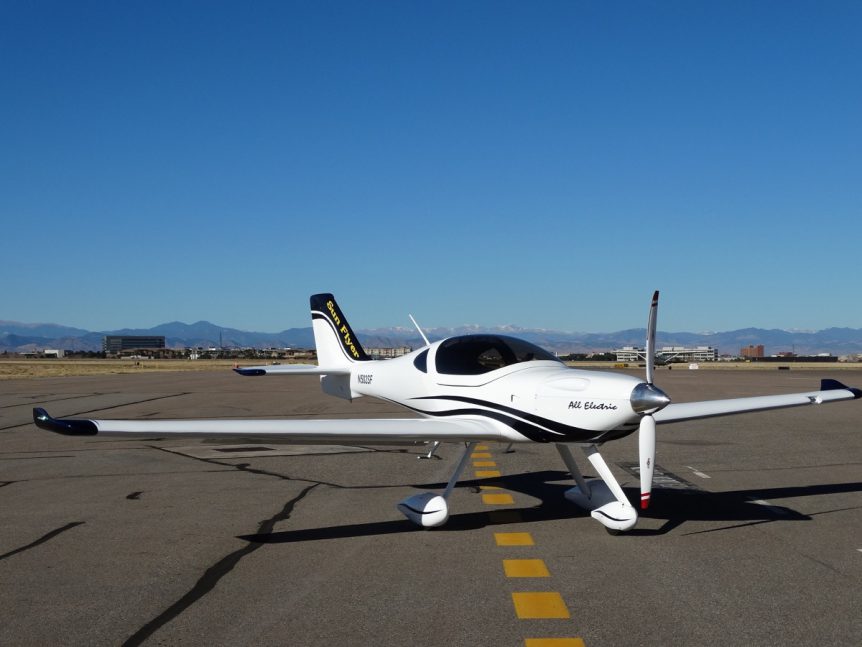Following assorted powerplant and taxi texts, the prototype Sun Flyer 2 prototype took to the air over Centennial Airport (KAPA) south of Denver, Colorado. Further tests will expand speed, altitude, and endurance capabilities, according to Bye Aerospace.
George Bye, Founder and CEO of Bye Aerospace, enthused, “We are excited about the future and the potential the Sun Flyer family of aircraft has to revolutionize general aviation, providing improved affordability and accessibility. Lower operating costs are key to solving the student pilot drop-out rate, which is curtailing the successful attainment of badly needed airline pilots. The Sun Flyer 2’s $3 hourly operating costs are 10 times lower than traditional piston-engine flight trainers, with no carbon emissions and significantly reduced noise.”
Such economies have probably contributed to the 121 reservations for Sun Flyers by organizations such as Spartan College of Aeronautics and Technology, where students might be able to avoid taking out loans to obtain their licenses and ratings. According to Aviation Week, George claims, “Flight schools desperately need this aircraft,” a step into the future from current hard-working trainers. Those who’ve grumbled about the lack of shoulder room in current side-by-side machines will find relief in Sun Flyer’s 46-inch wide cabin, which can accommodate two 220-pounders. Occupants will face an Avidyne glass panel, and can avoid fateful smacks on the ground with the full-airplane ballistic recovery parachute.
featuring a best climb rate of 1,150 fpm; normal speed range of 55-120 kt.; maximum endurance of 3.5 flight hours; super-recharge time of 30 minutes; zero emissions and nearly silent operation, as reported by Aviation Week, Sun Flyer will have a lot to offer students and operators.
With only one moving part in the motor, maintenance will be “minimal,” and Bye estimates operating costs at about $14 per hour.
Batteries are not as efficient at producing the energy per pound that gasoline or Diesel fuels manage, but the LG Chem “MJ1” lithium-ion cells installed in the Sun Flyer are capable of 260 Watt-hours per kilogram. EPS, Electric Power Systems, is contracted with Bye Aerospace to provide a complete energy package on Sun Flyers – both the two-seat 2 and four-seat 4, which will be brought to market soon. EPS will supply battery modules (packs), battery management units and power distribution units.
Nathan Milleam, Chief Executive Officer for EPS, says, “This partnership aligns with our shared vision to advance all-electric aircraft for commercial aviation applications. Our Energy Storage System leverages technology developed for NASA’s X57 platform, that enables our Battery Module to meet stringent FAA safety requirements around containment of cells in thermal runaway at a very light weight.”
Charlie Johnson, Bye Aerospace President, “extremely pleased to launch the test flight phase for the Sun Flyer 2 program,” hailed the “fantastic first flight.” Bye Aerospace notes the Sun Flyer family of aircraft, including the Sun Flyer 2 and the 4-seat Sun Flyer 4 will be the first FAA-certified, U.S.-sponsored, practical, all-electric airplanes to serve the flight training and general aviation markets.

